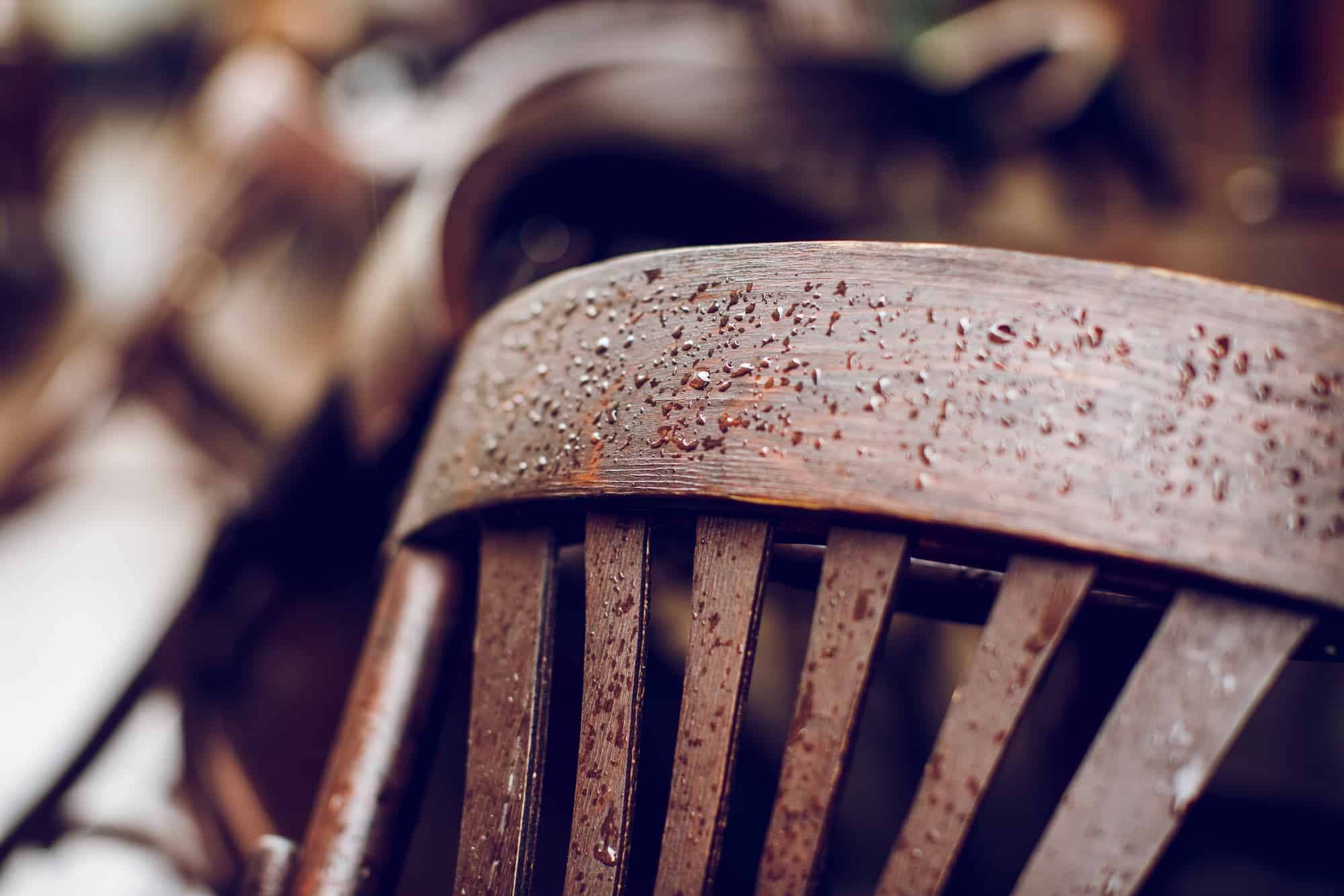We can all agree that outdoor furniture adds a unique feel to every backyard or porch. We can also agree that not all furniture is suited for outdoor use, no matter how well it complements your yard.
Generally, outdoor furniture that you can leave outside is furniture that can withstand weather elements. The ability of outdoor furniture to withstand the weather depends on its building material and the diligence of upkeep. Materials like aluminum can withstand harsh weather conditions while others, like iron, can’t.
This piece will detail the types of outdoor furniture you can actually leave outside and the types that you shouldn’t leave outside and provide some tips on maintaining outside furniture.
Outdoor Furniture That You Can Leave Outside
Outdoor furniture that you can leave outside should withstand all types of weather elements – snow, sun, rain, hail, et cetera.
The types of furniture that you can actually leave outside are:
- Aluminum furniture
- Synthetic rattan furniture
- Plastic furniture
- Treated wood furniture
- Stone furniture
Let’s explore the elements in these types of furniture that make them durable all year round.
Aluminum Furniture
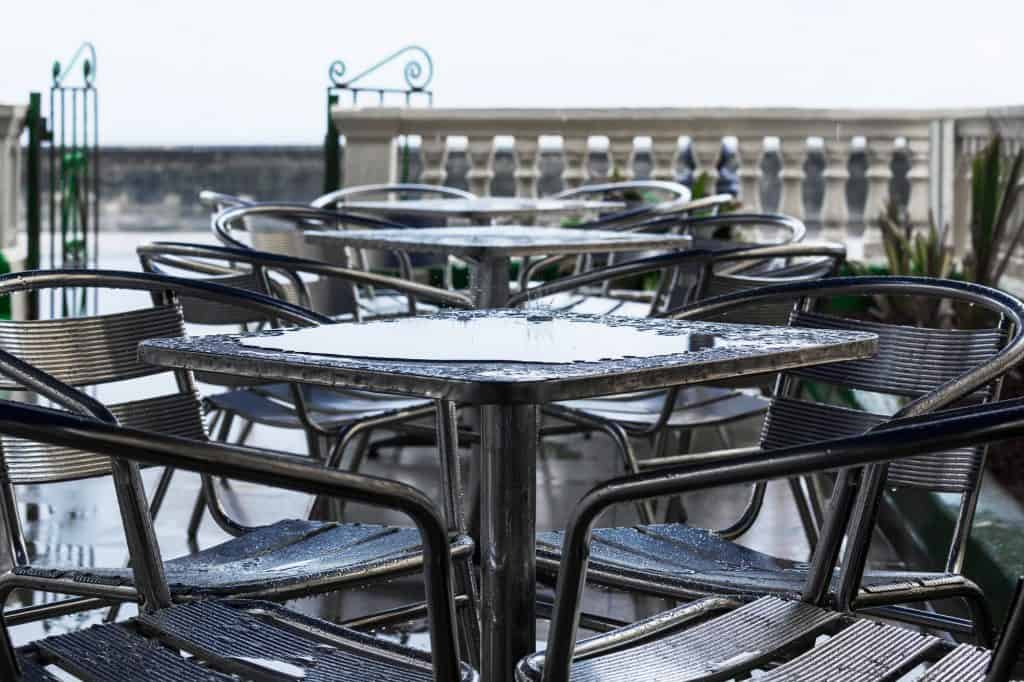
Aluminum is perhaps the best material to use for outdoor use. It reacts with the oxygen in the air to form a coat of aluminum oxide that shields it from elements that cause rust and deterioration.
Therefore, water from ice and rain doesn’t corrode aluminum furniture. The aluminum oxide coat also protects the furniture from harmful UV rays that cause degradation.
Furthermore, aluminum furniture requires little maintenance. Simply clean the furniture with warm water and leave it out to dry.
Aluminum’s weight might cause a problem, however. Aluminum is light, which is good because it allows you to carry the furniture around easily.
On the other hand, aluminum’s lightness makes it susceptible to strong winds. Therefore, make sure to secure your aluminum furniture when the forecast predicts windy conditions.
Synthetic Rattan Furniture

There are two types of rattan used to make furniture: natural and synthetic rattan. Furniture made using natural rattan is best kept indoors as natural rattan requires plenty of maintenance.
Synthetic rattan is more durable than natural rattan. It is made from resin and plastic, making it waterproof and UV-resistant.
Therefore, synthetic rattan furniture doesn’t suffer from water corrosion or heat degradation. Furthermore, its properties make it resistant to frost damage and prevent moss growth.
Synthetic rattan furniture will handle any weather without breaking a sweat.
Plastic Furniture
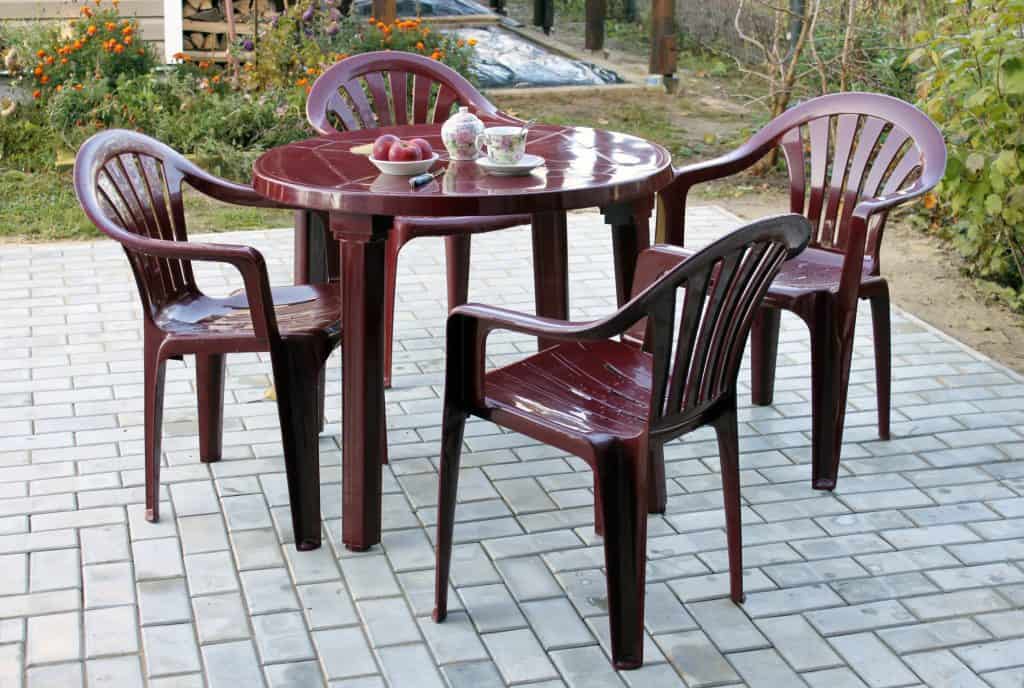
Plastic furniture isn’t susceptible to rust or rot brought about by the rain. Therefore, you can leave plastic furniture outside during the rainy season.
It is also resistant to snow, but extremely low temperatures can make the plastic brittle and susceptible to breaking. Extremely high temperatures can make plastic fade over time.
Plastic furniture will handle most weather conditions comfortably. However, if you reside in areas with extreme temperatures, my advice is that you store your plastic furniture inside.
Natural Stone Furniture
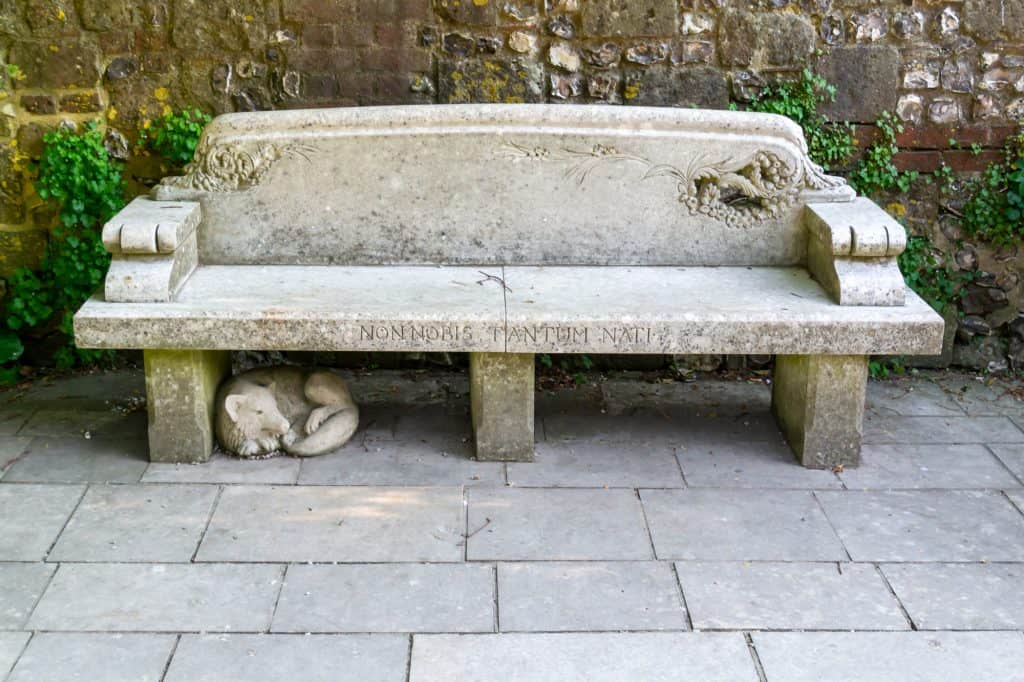
Natural stone furniture is built to last. Natural stone degrades slowly even when subjected to harsh weather.
Additionally, natural stone requires little maintenance. Natural stone furniture can, therefore, be a permanent solution for your backyard.
Take note that other types of stone can degrade due to extreme weather. The natural cracks in rock let in moisture, which can expand and contract depending on weather changes, thus causing degradation.
Stone damage is rarely instantaneous. However, prolonged exposure of certain rock furniture to extreme weather will lead to deterioration.
Treated Wood Furniture
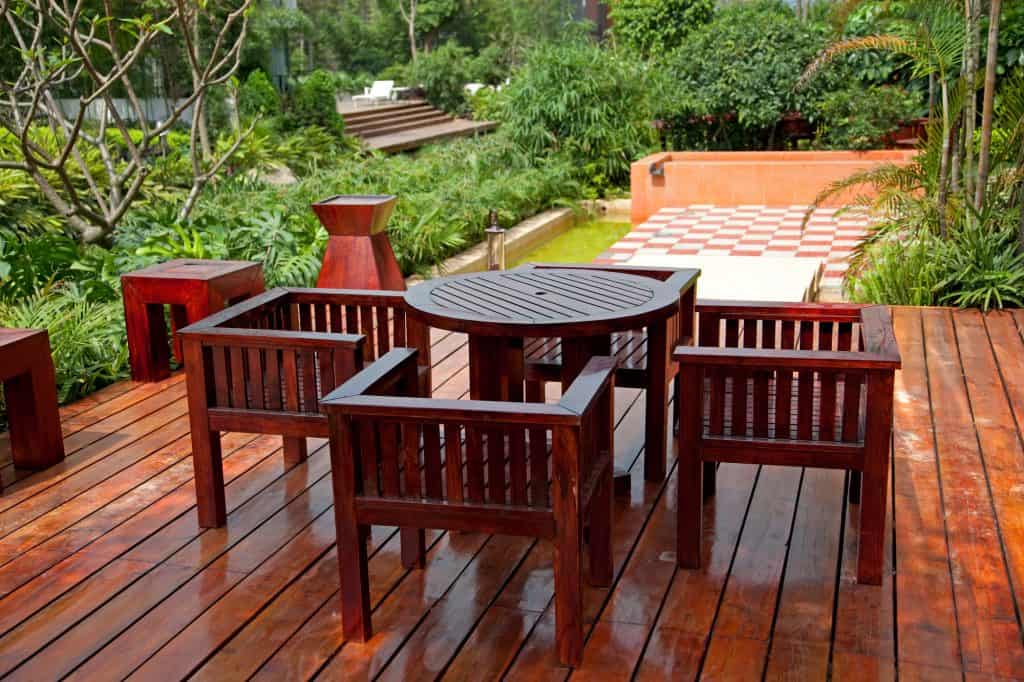
Treated wood furniture will last all year long. However, you must treat the wood annually to maintain its longevity.
Also, the type of wood used matters. Hardwoods like acacia, oak, elm, teak, and mahogany tend to last longer than softwoods such as pine, cedar, and spruce.
Teak is a favorite for outdoor furniture carpenters, as its elements keep out the moisture that facilitates rotting.
If you treat your wooden furniture right, it should last for close to three decades. Hardwoods can last up to half a century outside with proper care.
Outdoor Furniture That Shouldn’t Be Left Outside
Outdoor furniture that you shouldn’t leave outside will degrade when exposed to certain weather elements.
The types of outdoor furniture that you should store inside after use are:
- Iron or steel
- Untreated wicker
- Unprotected fabric
Let’s look at the elements that make the above furniture unsuitable for all-year-round outdoor use.
Iron or Steel Furniture
Unlike aluminum, iron and steel are susceptible to corrosion. Iron and steel are attractive materials for outdoor furniture because they are cheap and durable.
However, iron and steel will rust when exposed to damp conditions. Leaving iron and steel in the rain or snow will spark corrosion, thereby reducing the allure and longevity of your furniture. This is an important thing to consider, especially if you decide you want wrought iron, which is much more expensive than simple iron and steel.
It is best to store steel or iron furniture during the winter and cover the furniture with a waterproof cover during spring and summer. Applying a corrosion-resistant finish will reduce the chances of corrosion.
Wicker Furniture
Wicker furniture is characterized by its woven design, which is highly susceptible to weather changes. Expanding freezing water can cause cracks and lead to rot.
If your wicker furniture has not been specifically treated to be outdoors or made with weather-safe material (such as rattan), store it inside during the winter.
Fabric Furniture
You shouldn’t leave fabric such as cushions outside for the whole year.
Wet fabric attracts mold and mildew, which severely reduces the fabric’s lifespan. You should, therefore, dry the fabric before storing it outside during winter.
Waterproof fabric can withstand the elements all year long. Nevertheless, my advice is that you store the fabric during winter to maintain its vibrancy.
Steps To Protect Your Furniture From the Weather Elements
There are steps that you can take to increase the longevity of your outdoor furniture:
- Clean and dry the furniture to prevent the growth of organisms that thrive in damp conditions.
- Apply a protective coat to the furniture. This step mainly applies to metal and wood furniture. Your local supplier will advise you on the best coat to use, depending on what you have.
- Cover the furniture using breathable and waterproof material. It ensures that any dampness left inside evaporates while the furniture remains protected from outside moisture.
Conclusion
There you have it. You now know the types of furniture that will brave the elements all year round and come out unscathed. Follow the steps detailed above to ensure that your furniture remains vibrant and lasts longer.
Sources
- Outdoor Living Direct: Our top 7 reasons for choosing aluminium outdoor furniture
- Homes & Gardens: Why rattan furniture is so popular – and how to look after it
- Hilltop Garden Centre: What Garden Furniture Can Be Left Outside
- The Southern Company: Can I Leave My Patio Furniture Out All Winter?
- RealtyTimes: The Pros and Cons of Natural Stone Garden Furniture
- The Backyard Pros: What Patio Furniture Can Be Left Outside in the Winter?
- Oldrids & Downtown: What Garden Furniture Can Be Left Outside?
- Articulate: How Durable is Wooden Patio Furniture?
- Which?: How to buy the best garden furniture

